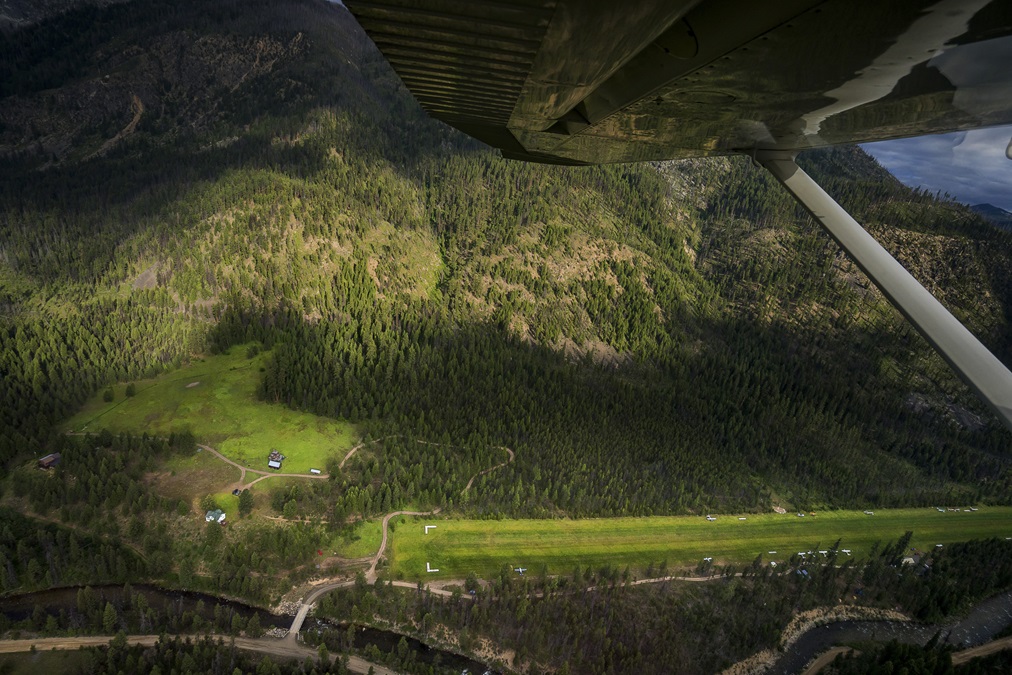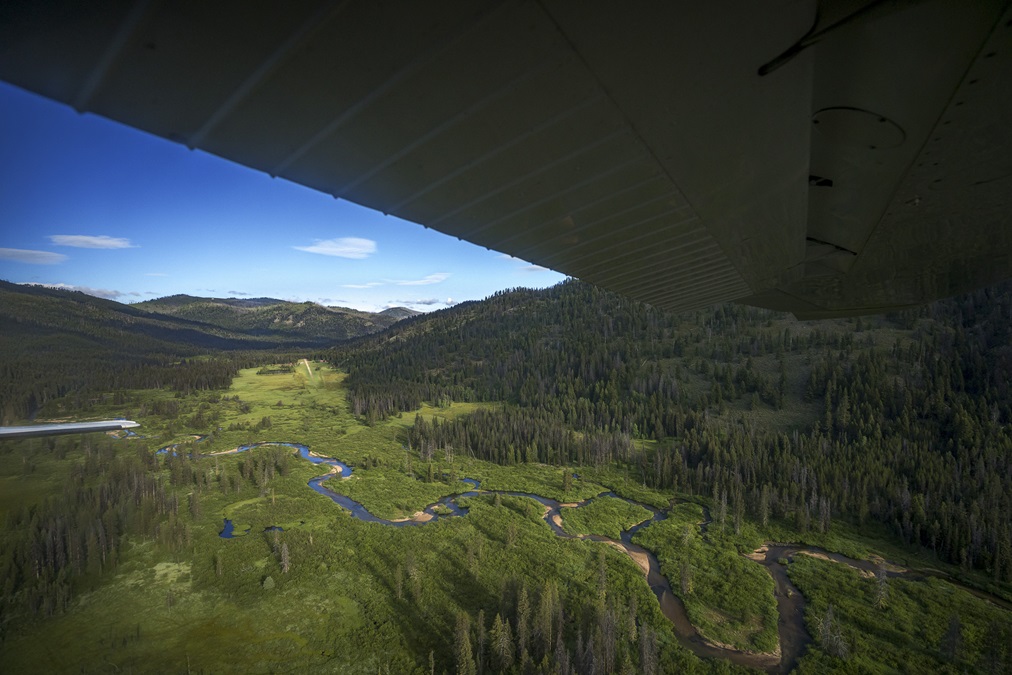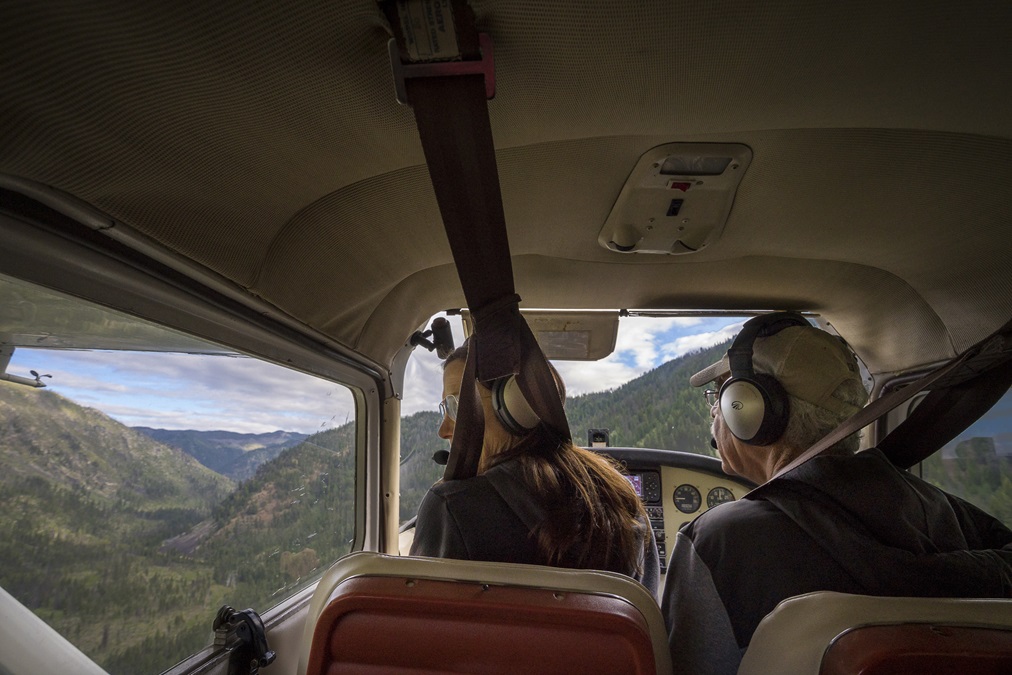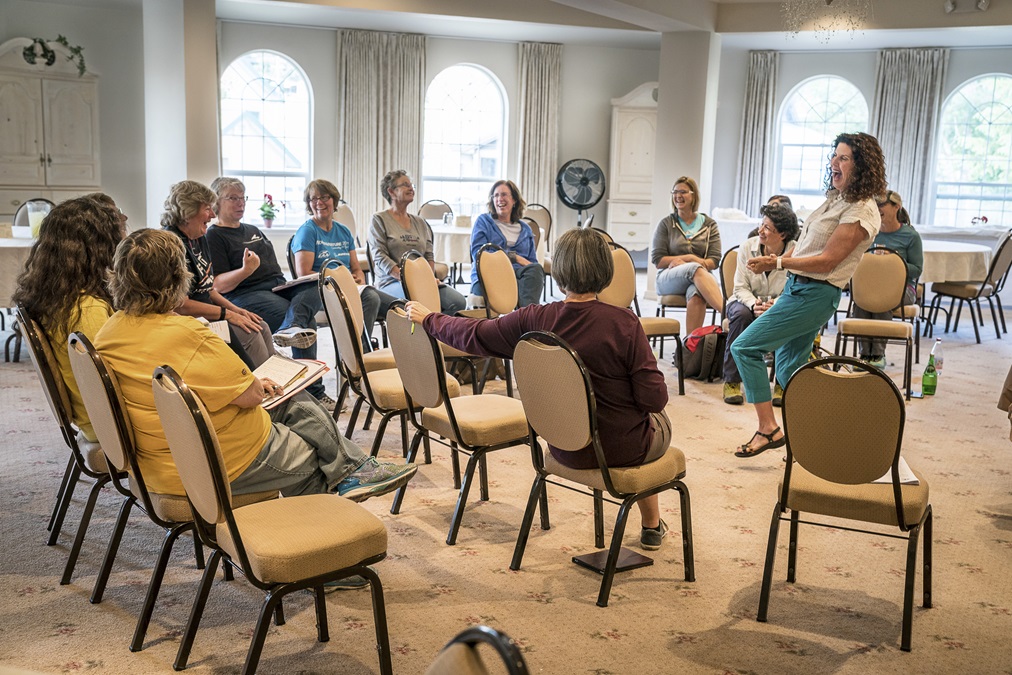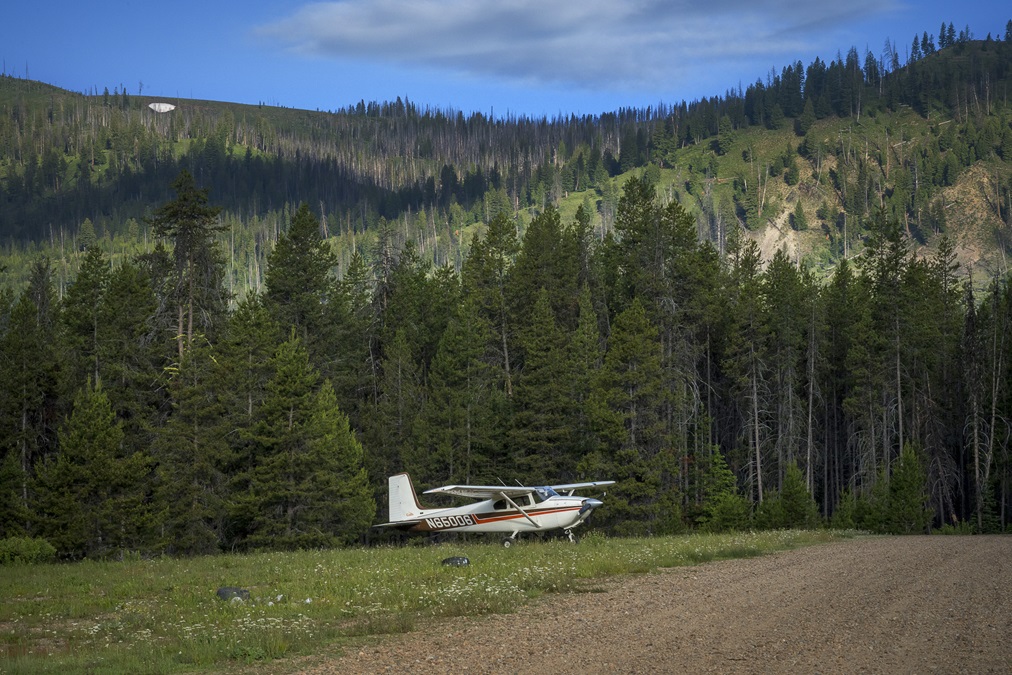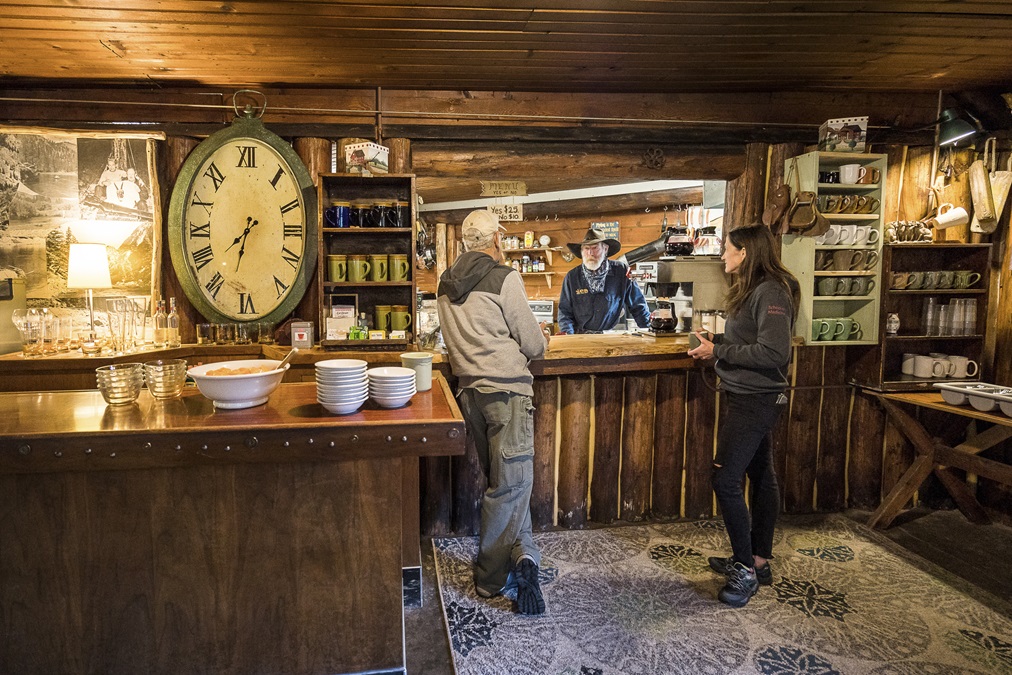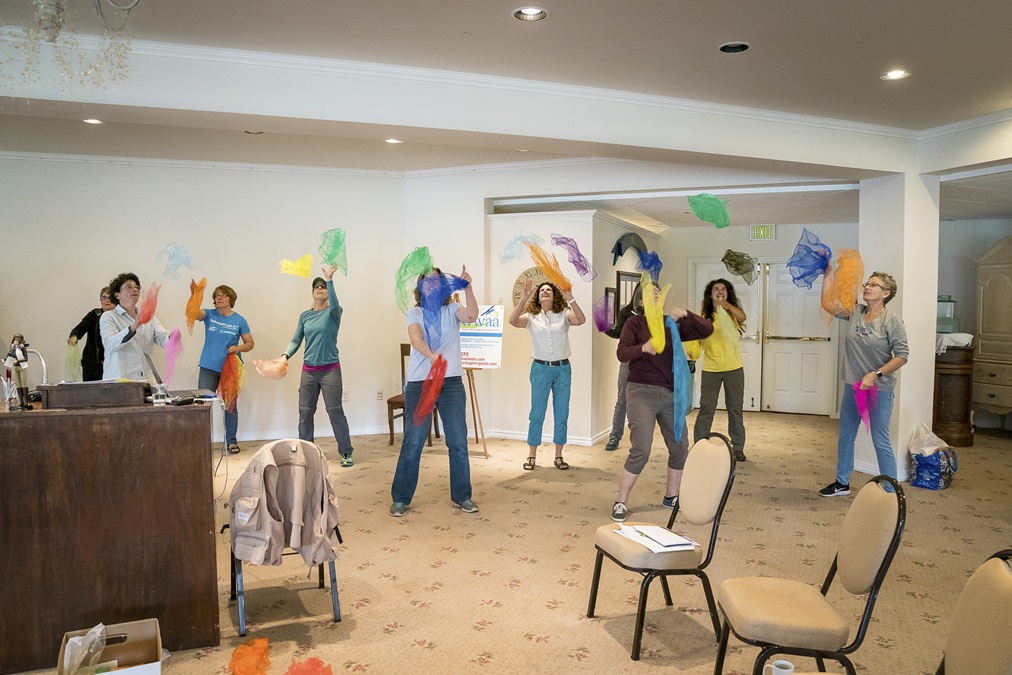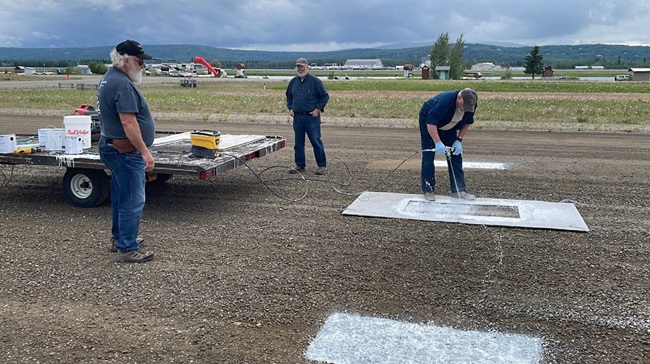Blame it on the backcountry
Women pilots thrive in a challenging environment
Trails—taxiways?—branch out from the runway into the trees. Some buildings are clustered along the southeast side, next to a road that wants to fool the eye into thinking that it, too, could be a landing surface. That road is the main street of Dixie Township, Idaho.
Bob DelValle says we are going to land here, and I don’t doubt him, but I am tense. We clear the treetops on base to final and aim for Runway 35 in DelValle’s 1957 turbocharged Cessna 182. Landing an airplane in the backcountry is about energy management and putting the airplane where you want it to go, not where it wants to land, DelValle says. Of course those are basic ingredients of any landing, but in the Idaho backcountry it’s much more dramatic.
Keeping the 182 rock steady at 60 knots on final, we touch down on Runway 35 and taxi all the way to the end—then do a 180 and depart on Runway 17. The runway dips in the middle, but I hardly notice as the 182 powers us out of the valley and onto our next stop.
The 182 is a perfect backcountry machine, and DelValle is a perfect guide for a newcomer to backcountry flying: knowledgeable but also reassuring, making sure that the pilot is comfortable while demonstrating safety practices shaped from decades of living and flying here. He loves flight instructing, and he also loves sharing his neck of the woods with flatland pilots. They go home with a logbook page of memories and a burning desire to return.
DelValle is one of a handful of flight instructors who are shepherding a group of women pilots through a weekend of flying exhilaration. The participants are sampling backcountry flying, as well as seaplane, gyroplane, and tailwheel flying. They’ll compare notes, discuss their strengths and weaknesses, and plot a course for the next phase of their flying.
The pilots have come from all around the United States and Canada at the invitation of Christina Tindle, a longtime backcountry pilot. Tindle’s day job is counselor and life coach, and in 2011 she put together a weekend getaway that lets women experience adventure flying while pampering themselves with a few indulgences, such as yoga and massage. The weekend has become an annual event. With the West Mountains, west of Cascade, Idaho, as a backdrop, Woman Wise Awesome Adventures—part seminar, part hands-on flying, part summer camp—helps participants develop a more creative way of thinking about their flying.
“During this week you get to reclaim charisma, courage, and dedication for personal adventure,” Tindle tells the group. She says women learn differently from men and don’t respond as readily to a militaristic approach, which is why her adventure weekends balance a lot of flying with activities such as learning to juggle and plein-air painting.
Day one is an ice-breaker, where participants talk about what they hope to accomplish. Rose B. Ganim wants to get proficient flying in the backseat of her Super Cub, Mr. Handsome. She has brought along Tara Strassburg, who hopes to gain confidence flying by herself.
Shelly Robison flies an Ercoupe. She is here to try a new kind of flying; she and her husband are looking to buy a bigger airplane.
Rhonda Sprague wants to get more comfortable flying her newly purchased Cessna 150. Sprague is here for another reason, too—a deeply personal mission that she’s not quite ready to share.
Flight at first light
At dawn, sandhill cranes roosting in the wetlands near Cascade Airport (U70) are active. Their rattling cry pierces the stillness. It’s eye-rubbingly early, but we are adhering to the common-sense rule: Fly early and be back on the ground before the air warms up. The airport sits at 4,742 feet msl, and high density altitude and turbulence are on everyone’s mind, even though the cool morning air promises smooth flying for at least a few hours (see “Proficiency: Making it Happen,” page 93).
For this introduction to the backcountry, DelValle has chosen Landmark (0U0), Sulfur Creek Ranch (ID74), and Johnson Creek (3U2). Even I, born in Maryland, know about Johnson Creek’s reputation as a beautiful destination, with a lush and well-maintained grass strip that is a favorite of campers. It’s also a busy destination during the summer, with multiple fly-ins. We’ll tackle Big Creek, Dixie Town, Wilson Creek, and McCall Municipal Airport.
DelValle's airplane is preflighted and fueled with enough-but not too much-avgas. Backcountry pilots "don't tanker fuel" because the additional weight degrades performance, DelValle said. "There's no reason to carry full fuel tanks in the backcountry," DelValle said. DelValle’s airplane is preflighted and fueled with enough—but not too much—avgas. Backcountry pilots “don’t tanker fuel” because the additional weight degrades performance, DelValle said. “There’s no reason to carry full fuel tanks in the backcountry. We always dip our tanks because we don’t trust the fuel gauges.”
En route to Landmark, the common traffic advisory frequency grows busy with pilots giving position reports. The transmissions are clipped and purposeful, and nobody is engaging in extraneous chatter. Scanning for traffic never ends in the backcountry, and DelValle worries that the arrival of ADS-B will cause some pilots to become lax.
We pick our way along the right side of the mountains, which are dusted with snow even in late June. DelValle tells me to reduce power, reminding me that we don’t want to be flying too fast in this terrain, lest we need to make a sudden turn.
Sulfur Creek Ranch, with an approach that dances out of sight even on final, is a privately owned guest ranch located in the Frank Church River of No Return Wilderness. The lodge’s hearty breakfasts are a favorite of local pilots. The menu is what the kitchen has on hand, but nobody complains. The tranquility is interrupted only by the occasional arrival of another airplane, discharging another pair of pilots looking for breakfast.
Comparing notes
With a morning of flying under their belts, the pilots are excited to dig deeper into survival skills necessary for flying in the backcountry. But first, they share their accomplishments and compare notes on the airstrips they’ve visited. Jen Pinkowski landed at eight backcountry airstrips, flying a 115-horsepower turbocharged Kitfox. “It was so much fun,” she says. “I love the challenge of it.”
Ganim has been flying her Super Cub from the backseat, which she says is like flying a different airplane because the perspective is so different. She knows she has to relax. “I can’t feel the seat of my pants if I tighten up too much because I’m tense,” she says.
Susan Crowe, flying a Cessna 210, had an epiphany from flying with instructor Christine Mortine. “I realize I baby the airplane,” Crowe said. “I let the airplane fly me a little bit. I learned to be more forceful with the airplane.”
“You’re coming into your sense of power,” Tindle tells her. “You can match your skill with it—you don’t have to baby it.”
Sprague is quiet at first. Then she describes flying into Johnson Creek, which was on her bucket list for an unusual reason. In 2013 her husband was a passenger in a Piper Tri-Pacer, flying with two other pilots to Johnson Creek to attend a fly-in. A Beech Baron struck the Tri-Pacer from above as both were attempting to land. The Baron’s pilot was seriously injured, and his young son died in the crash. The Tri-Pacer pilots were injured in the crash, but they survived, including her husband.
Tears in her eyes, Sprague says it was difficult and emotional for her to stand at the airport that was the site of the accident. Still, she’s glad she went.
Connections and bonds
When women pilots spend time with other women pilots, something changes in the atmosphere. Friendships form at the speed of light, and camaraderie crackles like an electrical charge. There’s a sense of joy to be able to share aviation with someone who’s just like you.
After returning home from their trip to the backcountry, the participants of WomenWise Awesome Adventures keep in contact on social media.
Connecting with other women pilots was one of the most valuable parts of the weekend, Sheila Gruba says. “Being able to hear their stories and having them share their accomplishments helped to bring up my confidence level,” she says. “It made me realize that we all have some aspect of flying that we may have some anxiety about and that with encouragement, practice, and training, you can overcome those feelings.” She says she was motivated to get started on an instrument rating.
“After coming home, I saw a huge change in my flying,” Gruba says. “I am so much more at ease.”
Sprague says flying 10 hours in four days and landing off pavement for the first time were immensely valuable. She went home feeling much more confident. “I had flown 20 hours in the two years before WWAA,” she says. “I flew 36 [hours] from the time I went to WWAA in June until December.”
Touching down on a driveway-sized airstrip is exhilarating in a way that most other general aviation flying is not. And it lends perspective to day-to-day flying, just as flying alongside a snow-capped peak lends perspective to the size of you and your airplane. Sometimes we need a reminder that we’re good at what we do—but we can always be better. The backcountry is there, waiting to show us how.
Email [email protected]

